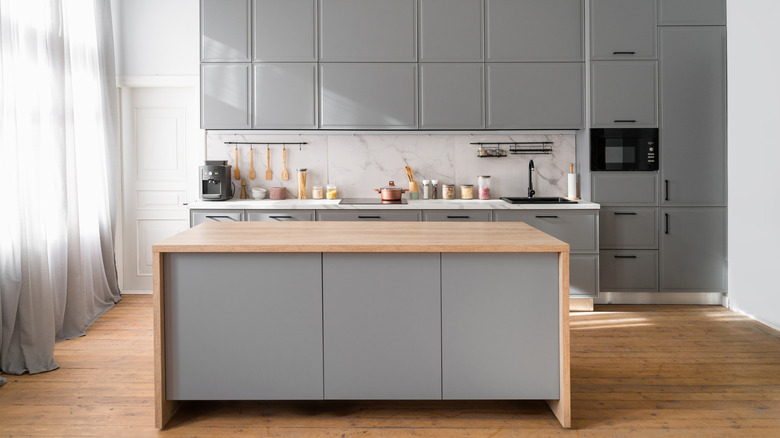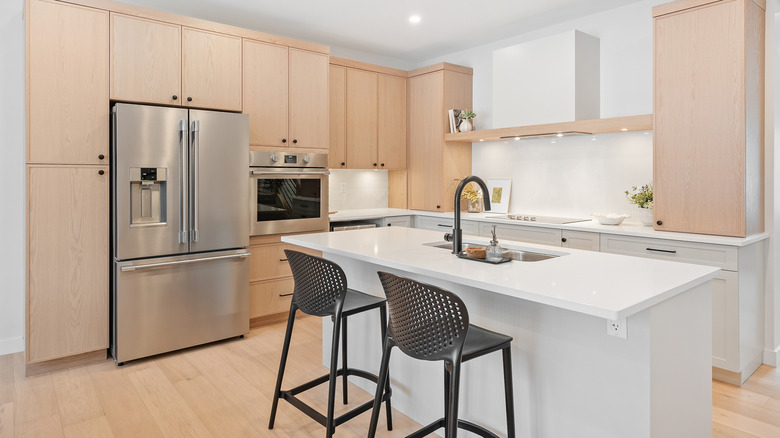The Kitchen Island Design Mistake That May Be Making Your Cooking Tasks Harder
A kitchen island can be your room's biggest asset depending on how it's designed. As an addition meant for providing more surface space and storage, this stylish alternative to cluttered countertops provides a place to prep, socialize, eat, and keep items that don't have a home in your cabinets or your other surfaces. And while many kitchen islands do boast sinks, it seems that this can be a big drawback for some homes, as it takes away from the prep area and even dining options. While certainly helpful in a larger island with lots of counter space, sinks in medium to smaller ones can also create more mess and decrease storage as well.
If you're debating over whether or not adding a kitchen sink in your island is a good idea, it may help to consider how big your surface space is, what you plan to use it for, and if a sink could be better at the edges of your kitchen for a more cohesive flow, leaving your island for other tasks that require a "blank canvas". Cost also plays into any decision to install a basin, as this requires plumbing and may even need renovations. If you're upgrading an existing worktop, this could become costly, and if you're starting from scratch, comparing the price of a built in sink versus no sink on your island, could be a big deciding factor in what you choose, especially if you change your mind down the line.
A sink could compromise prep space
The most obvious drawback to including a sink is the prep/eating space it will take up. This might be a kitchen island mistake that could create a lot of stress once you're actually working in your kitchen. One perk of having your sink installed on the periphery of your room is that it's out of the way. Having a large, blank surface like a kitchen island is prime real estate to do everything from chopping vegetables to preparing large meals, and even small snacks. Because many of your appliances likely reside on the periphery countertops, your island allows you to get numerous tasks done without running out of space.
A sink may create an obstacle you have to then work around. When it comes to using the sink, you may also splash water and food from dirty dishes on the surrounding counter, where everything from cookbooks and cooking supplies, to dining accessories reside. This will make more cleanup for you, and since it is such a visual draw, any mess could give your kitchen a cluttered look.
You may lose valuable dining areas
As interior design preferences shift, kitchen islands have gone from being a cooking prep and storage area to a social hub, too. In fact, some people even replace their traditional kitchen and dining room tables with an island, adding seating so that meals can be enjoyed there. Because there is so much activity within your cooking space, it makes sense that there's a central area where people can congregate, sit, eat, chat, and just generally hang out. These extensions allow you to play with design tips that will make your space feel more open, as well.
However, when you introduce a sink, much of your dining surface disappears if the island is not already quite large or long. If this is a spot where you and your family or friends spend a lot of time, adding a sink could be detrimental. While this upgrade or addition can certainly work, if you do have a slimmer or smaller island, a sink might just be more hassle than it's worth. Keeping the basin near a window or on the edges of your room will allow you to utilize the freestanding worktop for other tasks and purposes, elevating the style and functionality within your cooking space. Always weigh the pros and cons, and remember to consider the long term design and utility aspects to ensure you're getting the most out of your kitchen island.


